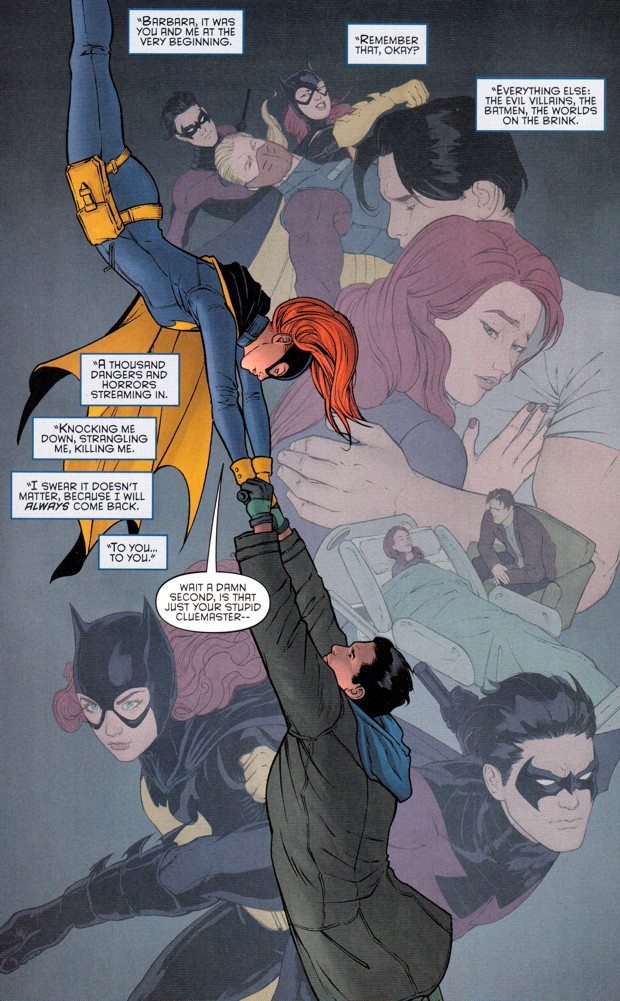WARNING: The following post contains spoilers for Grayson
12.
The twelfth issue of Grayson
depicts Dick Grayson’s arrival back to Gotham City
Cohn states that many comic
authors exercise a tight control over the reader’s eyes, a control maximized by
the layout of the page from a visual organization standpoint. The eyes are made to travel throughout the
page. However, in the case of Grayson 12, the creators chose to guide the eye
freely. While this freedom of movement can disrupt the experience of narrative
continuity, most artists deploy other means to regulate the "reading
path" taken, mainly by creating areas that are more prominent, which
command attention.
This page illustrates Cohn’s point. While the position of the speech bubbles allows the reader to move freely throughout the page, there is still a focal point as to what should grab the reader’s attention first, which is Jason Todd’s speech bubble outlined in red and the characters—Dick Grayson especially considering he’s the largest on the page.
This page illustrates Cohn’s point. While the position of the speech bubbles allows the reader to move freely throughout the page, there is still a focal point as to what should grab the reader’s attention first, which is Jason Todd’s speech bubble outlined in red and the characters—Dick Grayson especially considering he’s the largest on the page.

The bubbles surrounding the three characters on this page,
while there is no technical ‘right way’ to read them, still guides the reader’s
eye to ensure they don’t miss any detail on the page. Readers notice the
details of each character’s face, their body language, what clothes they’re
wearing and how it fits them, etc.
The comic continues to adopt this form through Dick Grayson’s interaction with each member of the Bat-family, and it’s effective due to the fact that it guides not only the eye but the time spent on the narrative aspects of each page. The reader follows the speech bubbles through the page and takes the time to read the speech of the past and really dwell on the pair of characters matched up in the situation, giving more meaning to the page as it becomes heavier and heavier with the knowledge of the past.
This is especially true
when it comes to the interaction with Barbara Gordon. While the casual reader
may not be aware of the deep rooted history between the two characters, the
comic does an excellent job of highlighting that fact. The caption boxes here
guide the eye throughout the page, each of the symbolic interactions between
the characters with a focal point on the two in present day at the centre of
the page.
This is an effective way not only to reach out the unaware
audience as to the past that Grayson has with all the supporting characters in
his comic, but also guide the timing of the narrative and the eye through all
the pages of the comic.
Written by; Alyssa Litynesky

No comments:
Post a Comment